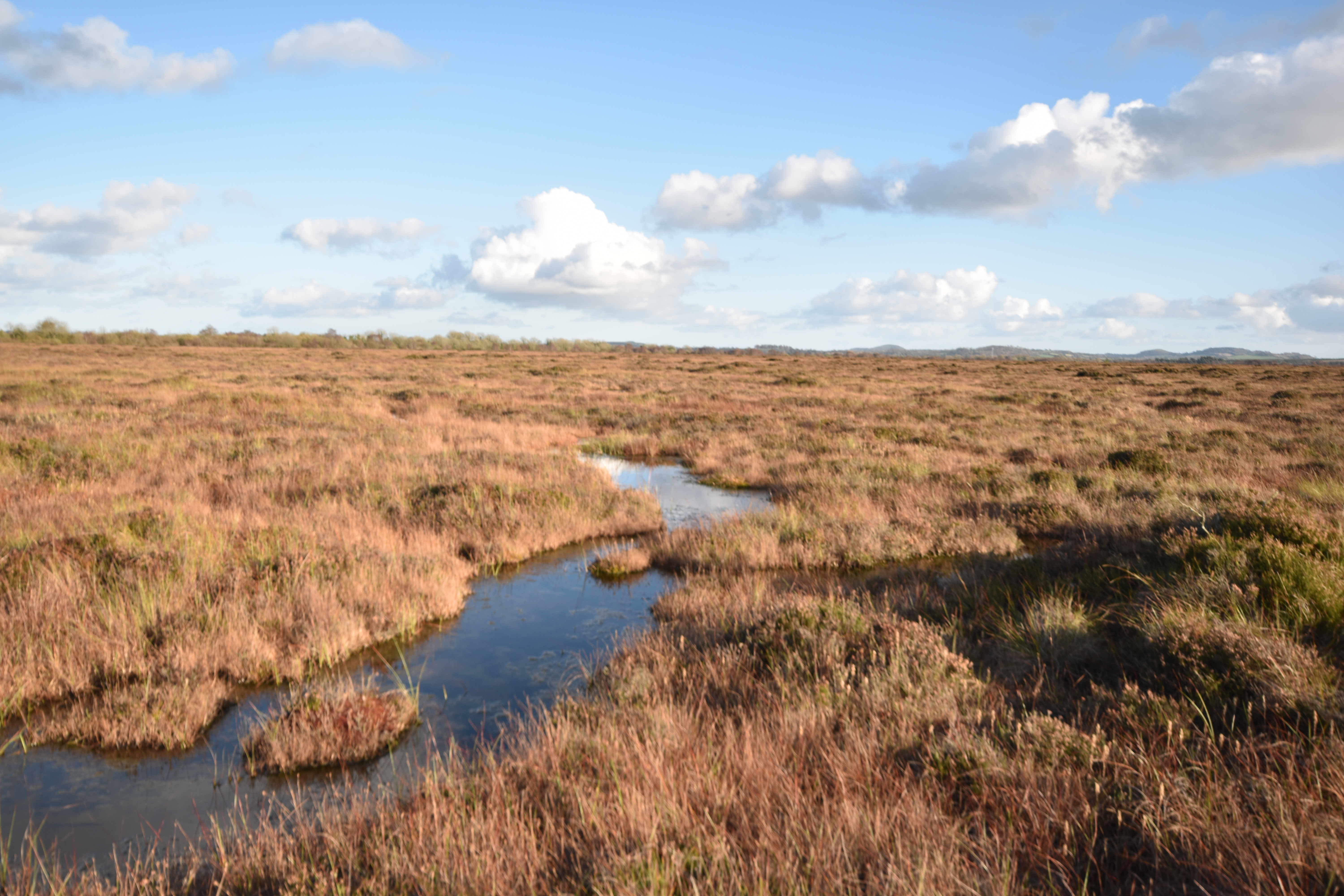Life Project on Garriskil Bog
We estimate that from project actions including drain blocking with peat and a small number of plastic dams, there will be an increase of Active Raised Bog on Garriskil by over 20%.
We restored the bog in 2018, taking 5 months to install almost 1,100 peat dams on the cutover and high bog. It is a beautiful sight from the air as these images show:
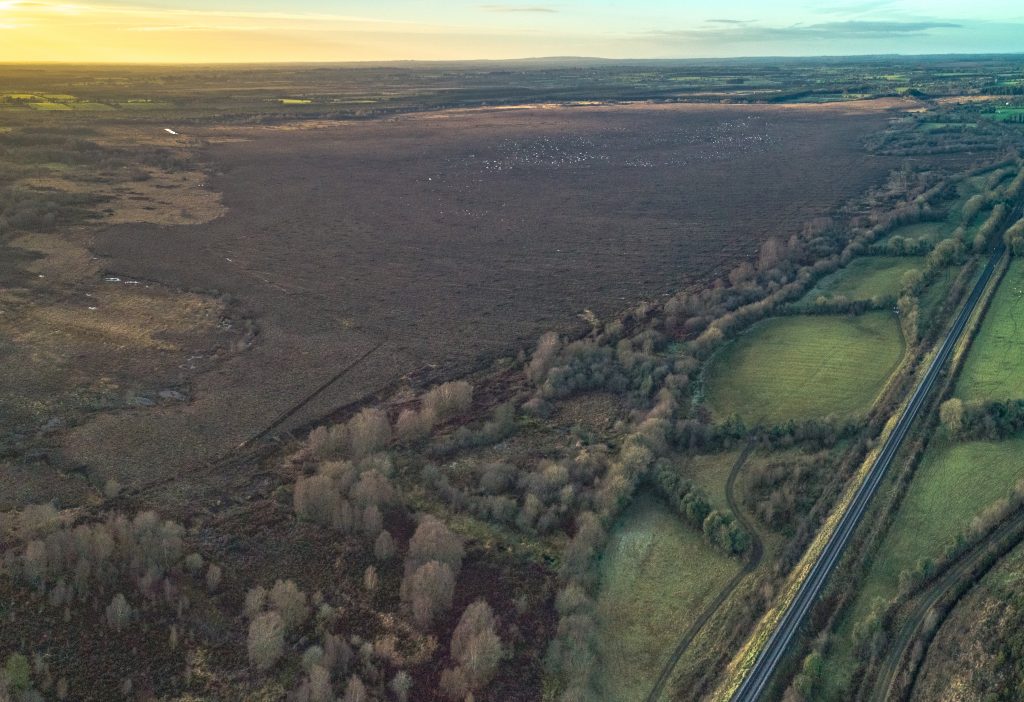
Garriskil Bog Co Westmeath. Pic: Skyfab/Declan Murray
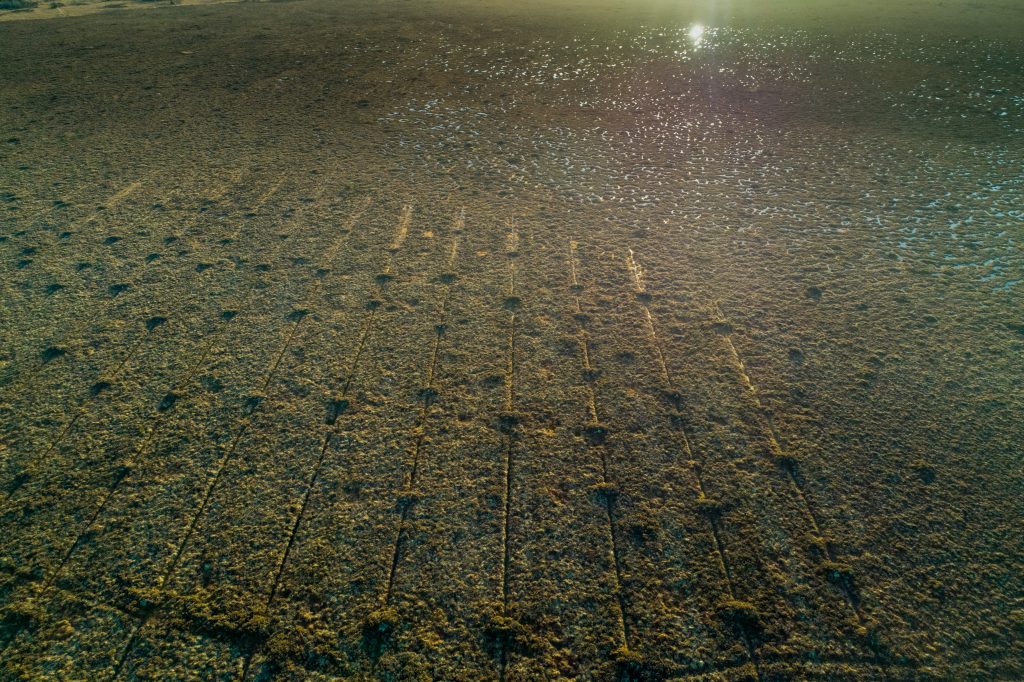
Blocked drains on the high bog at Garriskill Bog in Co Westmeath. Pic: Skyfab/Declan Murray for NPWS
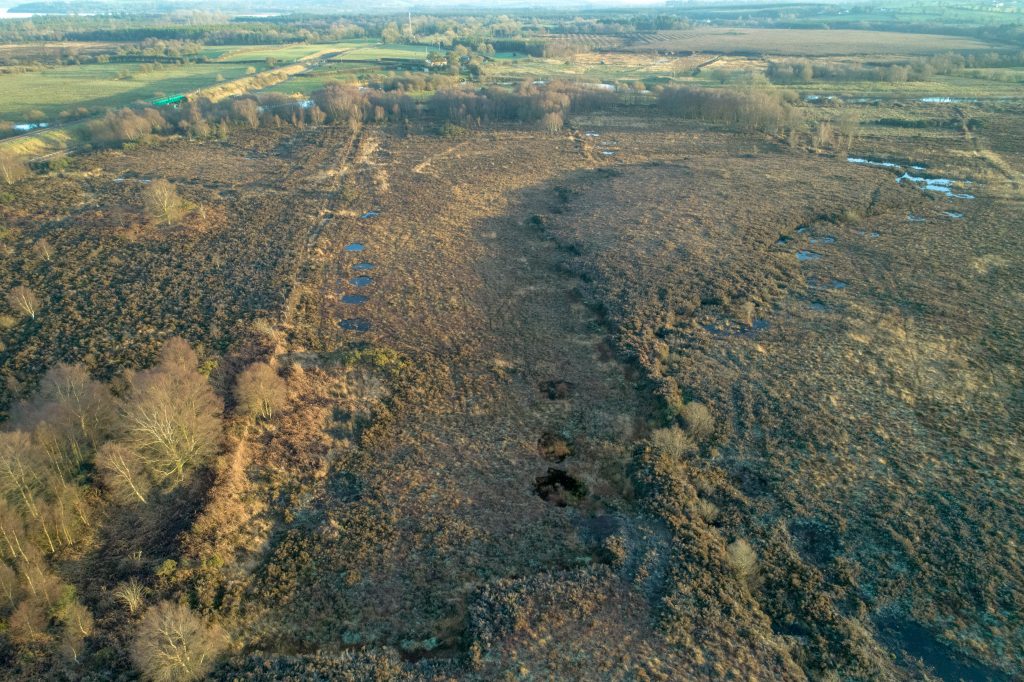
Blocked drains on both cutover and high bog. Pic: Skyfab/Declan Murray for NPWS
The current conservation objective for Garriskil Bog is to restore the area of Active Raised Bog to the area present when the Habitats Directive came into force in 1994. In the case of Active Raised Bog, the objective also includes the restoration of Degraded Raised Bog. The Area objective for Active Raised Bog is 86.13ha.
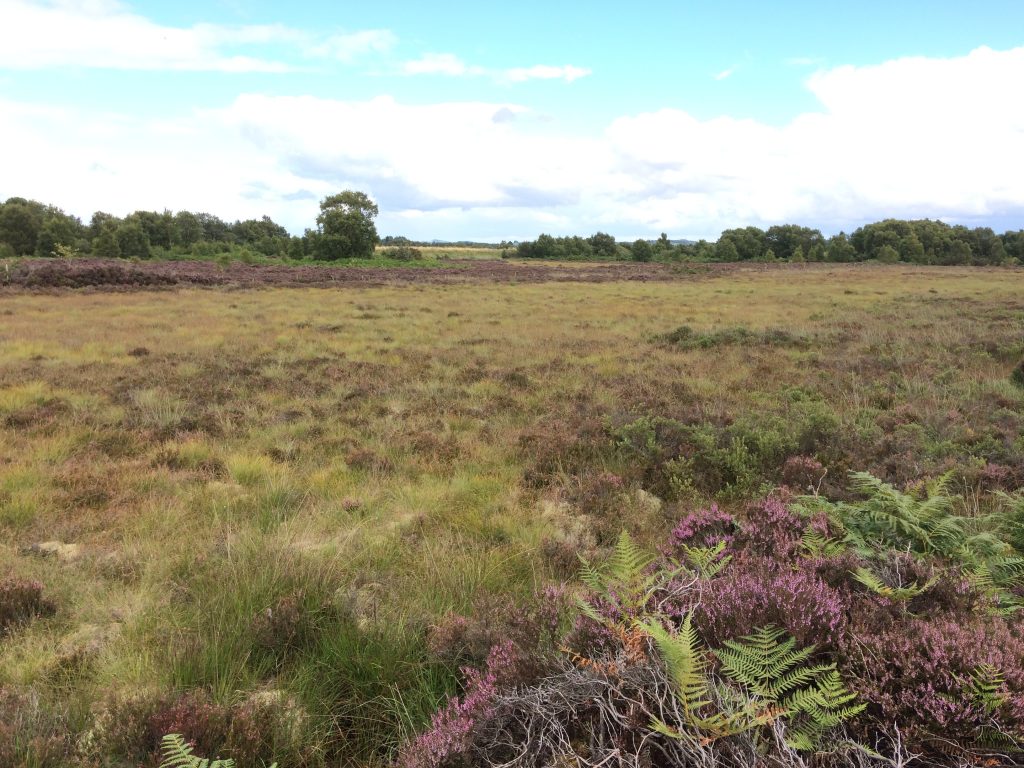
Garriskil Bog in the Autumn of 2017. Pic: William Crowley
As its overall objective, this LIFE Nature Project aims at restoring the favourable conservation status of Active Raised Bog (Natura 2000 code: 7110 *Active Raised Bogs) through the protection and restoration of a selection of bogs within the SAC network.
Garriskil Bog SAC has is one of the 53 raised bog SACs designated in Ireland under the EU Habitats Directive (92/43/EEC). As such, this site is deemed to be of paramount importance as an example of Irish raised bog to be conserved and restored. It fulfils this role regionally as an excellent example of a Midland raised bog; nationally as one of the most valuable raised bogs in the country; and at the EU level as an adopted site of Community Importance. Additionally, potential for increase in the area of Active Raised Bog has already been observed at this site.
Garriskil Bog is of considerable conservation value. It is especially important because a large proportion of the uncut high bog comprises very wet active raised bog, which is unusual for raised bogs in the eastern half of the Ireland; because of its relatively good condition, the site is considered to be one of the best remaining examples of a raised bog ecosystem in the eastern half of the country.
Additionally, this site is amongst those most appropriate to reach the project’s objectives because the restoration works previously undertaken have shown encouraging results.
A Restoration Project was undertaken in 1998, which included the blocking of high bog drains: particularly to the northeast of high bog. Evidence of improvement including infilling was noted by Fernandez et al. (2005). This trend has continued, as confirmed by a 2011 survey. Active Raised Bog has expanded within this drain complex. Therefore, the blocking of drains at the site should be recorded as a very positive action with an increase in the area of ARB of approx. 5.75ha in the 2004/5 to 2011 period. Several new peat forming areas have developed at the sites as a result of rewetting processes associated with the blocking of drains.
In addition, some of the sub-central and central ecotope sections have expanded. This already demonstrated potential for increase in the area of Active Raised Bog will be built on during the LIFE project.
The objective in relation to Structure and Functions (S&Fs) is that at least half of the Active Raised Bog area should be made up of the central ecotope and active flush (i.e. the wetter vegetation communities). These values have been set as Favourable Reference Values. Degraded Raised Bog still capable of regeneration should be, according to the interpretation manual, capable of regeneration to ‘active raised bog’ in 30 years if appropriate measures are put in place (i.e. no major impacting activities are present and any necessary restoration works are implemented).
In the past the habitat area was considered to be all high bog not considered to be active, but this is now not accepted as much of the high bog can no longer be restored to active (see DAHG 2014). The remaining non-active high bog is considered supporting habitat for the Annex I habitats on the high bog. This supporting habitat is an essential part of the hydrological unit necessary to support Active and Degraded Raised Bog habitats.
The restoration of suitable cutover areas is essential for Active Raised Bog to achieve the favourable conservation condition at the site. Nevertheless it is acknowledged that a long period of time (i.e. over 30 years) may be needed after appropriate restoration works are undertaken on the cutover areas for the habitat to develop.
We have seen an increase of ARB on Garriskil in the 2004 to 2011 period by as much as 5.75ha so we are confident of seeing a large increase over 30 years.
See project results section of the website for how we did here.
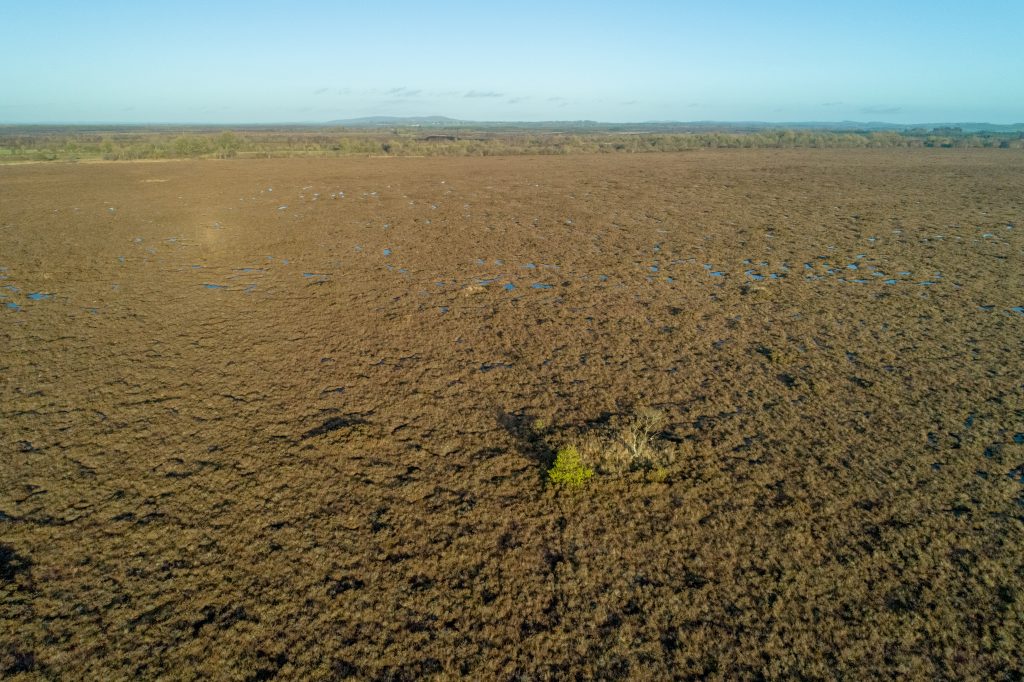
It’s like an alien landscape isn’t it? Garriskill Bog SAC by SkyFab/Declan Murray for NPWS
